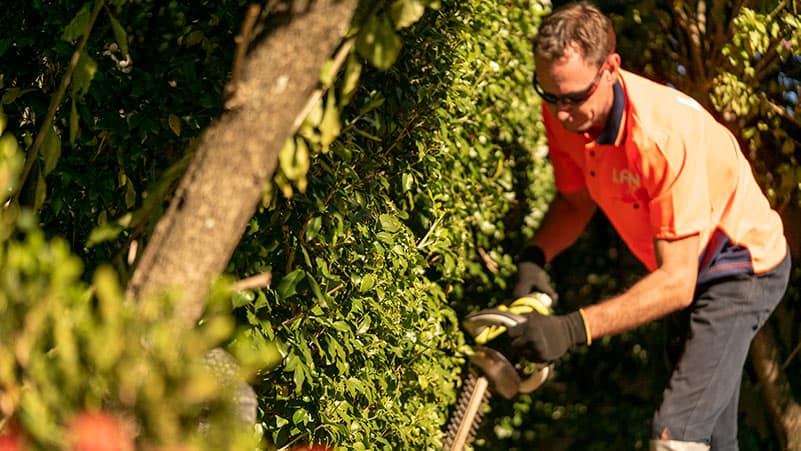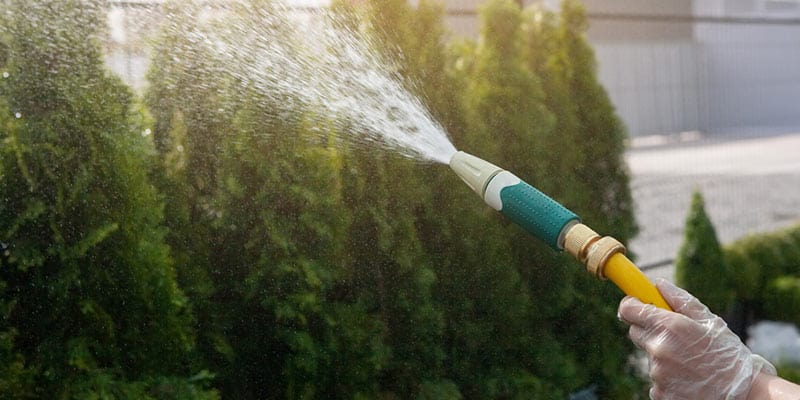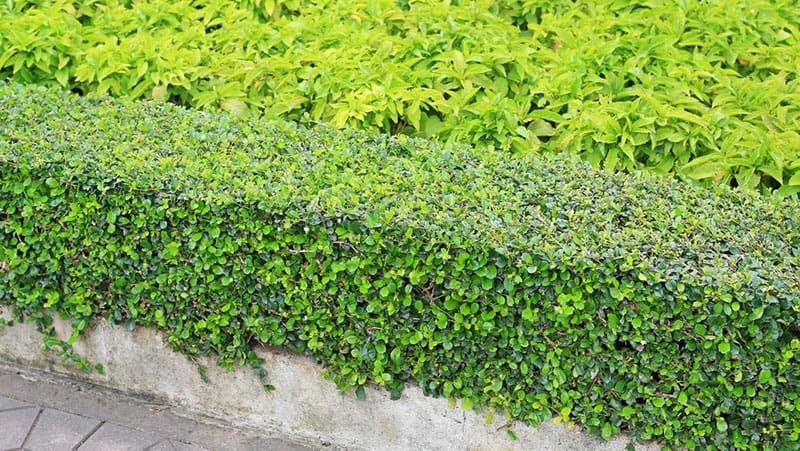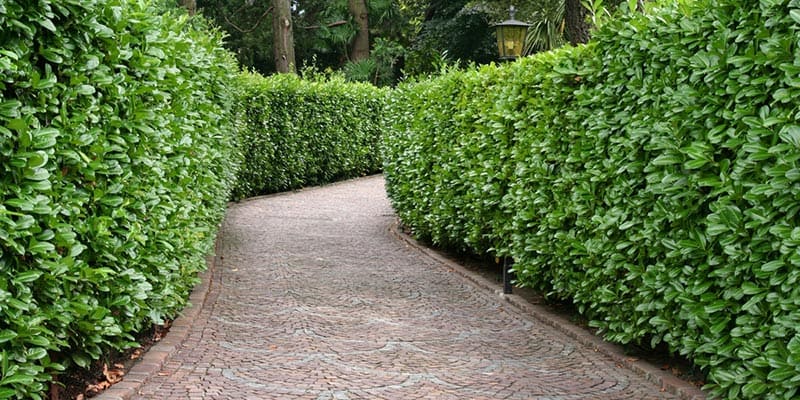Let me start by saying, the Murraya paniculata hedge deserves a chance. It’s worth having in your garden and a joy for relaxing in your private space. The Murraya hedge is like that no-nonsense best friend who will push you to do better and has a heart of gold underneath. That is, if you’ll look hard enough.
That said, the Murraya plant is both infamous and a crowd favourite among garden owners for many reasons. For one, Murraya is a versatile hedge that can be used for ornamental purposes or as a privacy screen. It also has sweet-smelling flower clusters and tightly packed foliage of glossy dark green leaves that make for a gorgeous addition to your garden.
If that hasn’t convinced you to get a Murraya hedge yet, imagine this. The Murraya flower’s unmistakable scent of orange blossoms is the reason why it’s also commonly called orange jasmine, orange jessamine, china box, and mock orange. That’s saying a lot about how a Murraya hedge can transform your garden just with its fragrance.

During the summer months, its flowers give way to bright red-orange berries that attract birds, butterflies, bees, and the occasional human to your garden. The hedge is simply picture-perfect.
Growing it into a thick, dense hedge is not a problem, either. Murraya is known for its sturdiness and can grow in different soil types, whether it’s loamy, sandy, or clayey. With proper selection and care, and a lot of understanding, it’s a hedge you just can’t go wrong with.
Are you excited to know more?
Read on for how you can grow a Murraya hedge in your own garden. We’ll be sure to give you tried-and-tested tips that’ll make you love your Murraya plant so much, you’ll want to stay in your garden all day long.
How to select a Murraya hedge
Determine the purpose of your hedge
Choosing the appropriate Murraya hedge depends on the reason why you’re growing one. If you’re looking to use your hedge as a privacy screen or windbreak, it would be good to opt for taller Murraya varieties. Murraya hedge height can reach up to 4m. Coupled with dense, almost impenetrable foliage, that’s more than enough privacy for your space.
For low hedges or decorative garden borders, the shorter Murraya paniculata dwarf variety is more suitable. This variety can be planted in pots and grown as shrubs. It works especially well for smaller gardens with limited space. Versatile, isn’t it?
Select a variety that’s suitable for your needs
When selecting a Murraya hedge, some lawn care experts recommend choosing the Murraya hybrid cultivar variety over the Murraya paniculata.
The Murraya hybrid cultivar variety is popularly known as Sweet Privacy and is reputed among garden owners to need less pruning than the paniculata variety. This is not to say that you shouldn’t go for Murraya paniculata altogether. The paniculata variety is a popular hedge in Melbourne and thrives well in the city’s coastal air.
Queensland communities have categorised the Murraya paniculata as a weed, however, because of its tendency to compete with other plants. Some garden owners are not particularly concerned about this, but it can be a nuisance if you’re also growing more delicate plants in your garden. It all really depends on your needs and preferences.
Fast and assertive growth may be a bit of a problem to others, but if you’re like me who admittedly likes a little wild here and there, it can be a must-have for you.
How to grow a Murraya hedge

Murraya paniculata is fairly easy to grow and take care of. This is especially true for gardens in warmer climates, so you’re all set living in Australia. Here’s an easy step-by-step guide on how to grow your very own Murraya hedge:
Step 1: Pick a sunny spot.
Your Murraya hedge is not afraid of a little sunshine. In fact, it thrives well where there is light shade and full sun.
Step 2: Prepare your soil.
Remove any weeds and other debris from the spot where you’ll plant your hedge. To improve the soil structure and ensure it is well-drained, work your soil thoroughly and add gypsum and garden mix.
Step 3: Dig the hole.
Prepare the trenches where you’ll plant the Murraya by digging a hole at least 60cm deep and about twice as wide as the root ball width. The intervals between the holes should be around 30cm – 100cm for your hedge to be evenly spaced.
Step 4: Transplant your Murraya.
Gently remove the Murraya shrub from the container and carefully loosen the roots. Place the shrub in the hole and fill with potting mix.
Step 5: Water well.
Form an outer ring around the shrub using the mix and water the plot well. This will help keep the water in and make the soil moist while the hedge is trying to establish. Depending on how hot or rainy the weather is, you may water the shrub between once or twice a week.
Step 6: Mulch.
As soon as you’re done watering, add mulch around the area to keep the soil cool and prevent weeds from growing. Be careful not to mulch directly or too near the trunk as this can cause fungal disease to the shrub.
Step 7: Space evenly.
Murraya hedge spacing should be fairly simple and easy as long as you’re certain of the variety you’re going with.
When considering Murraya paniculata hedge spacing, the main factor you’d want to look into is your purpose for having a hedge. If you’re looking for a privacy screen, windbreak, or noise barrier, we recommend spacing your Murraya between 60cm to 76cm to create a thick, dense hedge.
If you want to use your Murraya to line your walkway or driveway, we recommend using taller varieties that should be spaced at least 91cm to 107cm apart.
Smaller Murraya, such as the dwarf varieties, are used for low hedges and ornamental purposes and would need closer spacing.
Step 8: Fertilise.
Fertilise your plot every two weeks to ensure that your hedge grows thick and healthy with beautiful white flowers.

Murraya paniculata care: Murraya hedge tips and FAQs
Now that you have established your Murraya hedge, learning how to care for it is the next step. We’ve compiled our best Murraya hedge tips so your Murraya plant will be healthy and sturdy:
How long does a Murraya hedge take to grow?
A Murraya hedge takes 3 to 4 years to grow to its full height. Regular light pruning will make your hedge grow thick and dense.
Will Murraya grow in clay?
Murraya is a hardy, low maintenance plant that can live in different types of soil. It is important that the soil drains well, however. If your soil variety has a high clay content, you can loosen the soil by adding dolomite, gypsum or garden mix to it.
How often should I water Murraya?
If your soil is dried 2.5cm to 5cm from the surface, this is an indication that you should water your hedge. Make sure to water more during dry and hot weather, and to reduce or withhold watering altogether during the rainy season.
You should water deeply to make sure that the roots drink enough to nourish your hedge. To know if you have watered sufficiently, your soil should be soaked but in no means soggy or waterlogged. We recommend using well-draining soil for your hedge.
How do you trim a Murraya?

Prune your Murraya as needed to ensure that it grows into a thick, dense hedge. Prune the top of your hedge to maintain its height. For taller varieties, you can use electric shears if you feel more comfortable, but manual shears will work just as well. Autumn is the best time to prune your hedge to encourage flowers to grow the following spring.
What fertiliser should I use?
Your Murraya hedge needs nutrients to grow healthy and sturdy. You will know if your hedge is healthy when it has crisp white flowers and dark green foliage. Yellowing flowers can indicate that your Murraya is nutrient deficient and need to be fertilised. But what fertiliser should you use?
The best fertilisers to use for your Murraya hedge are NPK fertilisers, organic humus-rich fertilisers, and fortified synthetic fertilisers. Fertilising in the spring is the best time to feed your hedge.
Because Murraya is a fast-growing plant, you want to avoid fertilisers that have a high nitrogen concentration. These accelerate your hedge’s growth even more and can result in a weaker constitution. While your hedge may look tall, its foliage may not be as dense and tightly packed as when you use organic humus-rich fertilisers.
What should I remember when transplanting Murraya?
The best time to transplant your Murraya is during the autumn season.
When transplanting Murraya, make sure to pick a spot where there is plenty of sunshine. Your hedge thrives in a sunny environment and will need at least 6 hours of sunlight exposure to grow healthy. Remove any weeds from the area where you will transplant your Murraya. It is best to use well-drained soil for this as well.
Murraya hedge problems
What’s there not to love about the gorgeous Murraya, you might ask. Quite a few, according to some garden owners in Australia. Not surprisingly, there’s a love-hate relationship with this hedge, with some raving about how easy it is to grow, while others say it can be quite challenging to care for.
When your Murraya hedge has yellowing leaves and flowers and looks unkempt or unhealthy instead of thick and dense, your hedge may be having problems.
Pests and other infestations
Soil nematodes are parasitic worms that feed on the roots of your Murraya hedge and can cause it to become nutrient deficient and weaken. Aphids are another type of pests that can live off on your hedge. Using organic pesticide will help remove aphids from your hedge.
Another form of infestation is through bacterial infection. The African and Asian citrus psyllid causes Yellow Dragon disease and makes your hedge’s leaves look blotchy and yellowish. It’s best to discard the contaminated plant to avoid spreading the disease to other Murrayas in your garden.
Unkempt appearance and invasive growth
The Murraya paniculata is one hardy plant that thrives well in warm climates. While its fast-growing nature makes it a popular choice for hedging, it’s also the reason why it can be invasive. Pruning and trimming regularly will contain your hedge and ensure that it follows the height you want.
Under-watering or over-watering
The key to caring for your Murraya hedge is to understand how much it loves the sun. This means that it does better under full sunlight and only needs to be watered well once or twice a week. Opt to water your Murraya deeply in less frequent intervals instead of watering lightly frequently.

Murraya hedge trivia
It is non-toxic
Good news to garden owners! Your Murraya hedge is completely safe for humans and pets and is in fact, completely edible. It may be a bit of an acquired taste, though. But toxic? Definitely not.
The flowers have a high sugar content
Remember the part where we mentioned that birds, butterflies, and bees love Murraya berries? This is because the flower’s stamen contains high levels of sugar that you can actually taste if you pull a stamen from the plant. Let us know what you think as soon as you have tried it!
It is fairly drought-tolerant
As if the range of superpowers mentioned here is not enough, another amazing trait of your Murraya hedge is its ability to withstand drought. Unlike most plants that wither or die upon the first sign of dehydration, the Murraya hedge can tolerate dry soil for a longer period of time.
Take care not to let it go waterless for too long, however. Even with its sturdy nature, Murraya hedges still need water to thrive and would inevitably get stressed if subjected to prolonged dehydration. You’ll probably be less worried when you forget to water it, though.

Why we love Murraya
At Lawn.com.au, we are a Murraya-loving bunch. Whether it’s the paniculata or hybrid varieties, they all bring something wonderful to your garden. Plants that bring back poignant summer memories are few and far between, and your Murraya hedge is the obvious winner when it comes to this.
While some garden owners may have an issue with its potential invasiveness, caring for the low maintenance Murraya just means putting in a little effort for light pruning and deep watering. For all its beauty, it’s a no-nonsense hedge to have in your garden.
Can’t wait to share with us your experience at growing a Murraya hedge? Give us a call and we’d love to hear from you!

